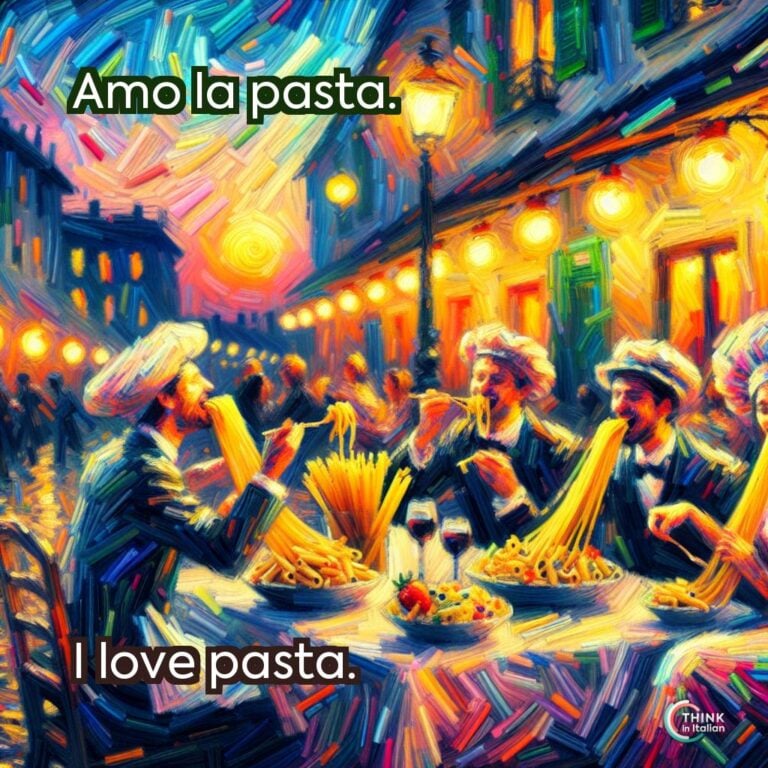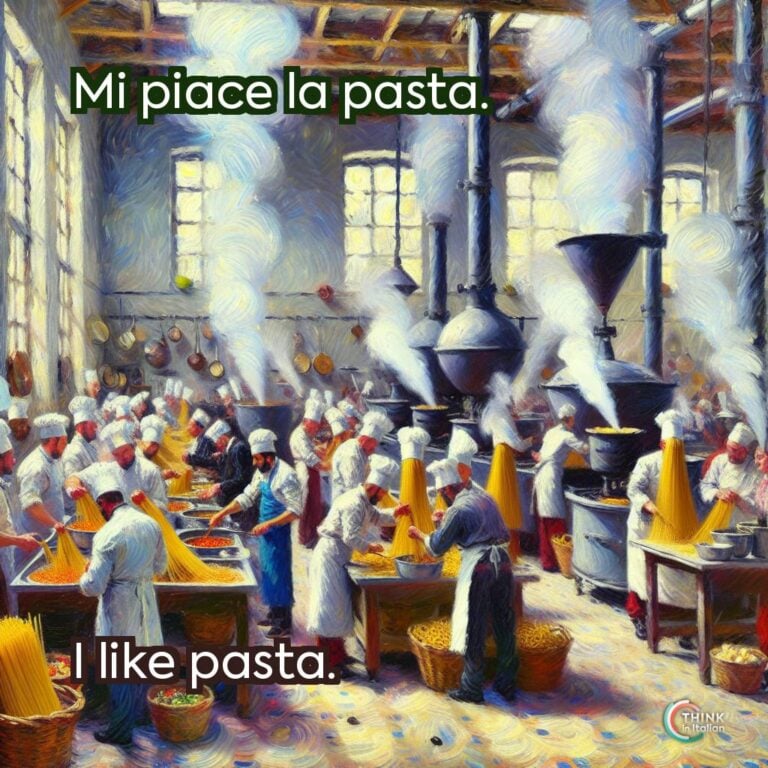How to say “I like it” in Italian
The Difference Between English and Italian
If you ever go to Italy, you’ll need to learn how to express likings to say that you enjoyed the food, the weather, the nightlife, the coffee… Today, you will learn how to express this feeling in Italian.
The very first thing you have to keep in mind when learning the verb piacere is that its syntactical structure is very different from English, just like for the verbs mancare (to miss), and servire (to need), and sembrare (to seem).
In English, the person who likes, needs, or misses someone or something is the subject of the sentence, and the liked, needed, or missed object or person is the direct object of the sentence.
In Italian it is the opposite: the liked, needed, or missed object or person is the subject of the sentence, while the person who likes, needs, or misses someone or something is the indirect object.
This means that you need either an indirect pronoun or the preposition a to introduce the object. For instance:
La pizza mi piace.
I like pizza.
Here, pizza is the subject of the verb piacere and mi is the indirect pronoun, namely the pronoun me introduced by the preposition a. In fact, you could also say a me piace la pizza which translates in the same way.
How to Express Likes and Dislikes in Italian
How to say “I Like it too”
If you want to reciprocate the feeling of liking, in Italian you can say anche a me piace. Let’s break down this sentence so that you can understand how to use it in different contexts as well:
- Anche: This means “also” or “too”.
- A me: This translates to “to me”.
- Piace: This is the verb “to like” in the third person singular form.
When combined, these elements create a phrase that literally means “also to me it is pleasing”, which corresponds to “I like it too”. Of course, depending on the context of the conversation you might need to refer to something different.
The elements you have to intervene on are the indirect pronoun – it depends on who likes or dislike something – and the verb conjugation – it depends on whether one or more items are liked.
-Mi piace la pizza.
-I like pizza.
-Anche a me (piace).
-I like it too/Me too
-Mi piacciono le città europee.
-I like European cities.
-Anche a me (piacciono)
-I like them too/Me too.
How to say “I Don’t Like it Either”
If you want to reciprocate the feeling of disliking something, in Italian you can say neanche a me piace. Let’s break down this sentence so that you can understand how to use it in different contexts as well:
- Neanche: This means “neither”.
- A me: This translates to “to me”.
- Piace: This is the verb “to like” in the third person singular form, but in this context, it means “dislike”. Remember that in Italian the double negation is mandatory.
When combined, these elements create a phrase that literally means “neither to me it is pleasing” which corresponds to “I don’t like it either”. Just like I showed you before, depending on the context of the conversation, you might need to refer to something different.
-Non mi piace la Francia.
-I do not like France.
-Neanche a me (piace).
-I do not like it either/Me neither
-Non mi piacciono le melanzane.
-I do not like eggplants.
-Nenche a me (piacciono)
-I do not like them either/Me neither.
Other Expressions
Adjectives to Express Preferences in Italian
Adjectives are a good way to express likes and dislikes in Italian. Here I will list some examples of adjectives that you can use to talk about your likes and dislikes:
- Buono/a: This adjective means “good”, for example, la pizza è buona (pizza is good).
- Cattivo/a: This adjective means “bad”, for example, la birra è cattiva (the beer is bad).
- Delizioso/a: This adjective means “delicious”, for example, il gelato è delizioso (the ice cream is delicious).
- Disgustoso/a: This adjective means “disgusting”, for example, il pesce è disgustoso (the fish is disgusting).
- Interessante: This adjective means “interesting”, for example, il libro è interessante (the book is interesting).
- Noioso/a: This adjective means “boring”, for example, il film è noioso (the movie is boring).
Verbs to Express Likes and Dislikes in Italian
Here are some verbs that you can use to talk about your preferences:
- Adorare: This verb means “to adore”, for example adoro la pizza (I adore pizza).
- Odiare: This verb means “to hate”, for example odio la pioggia (I hate rain).
- Preferire: This verb means “to prefer”, for example preferisco il tè al caffè (I prefer tea to coffee).
- Amare: This verb means “to love”, for example amo la pasta (I love pasta).
- Detestare: This verb means “to detest”, for example, detesto il calcio (I detest soccer).
- Essere fan di: This idiom means “to be a fan of”, for example sono fan di Vasco Rossi (I am a fan of Vasco Rossi).
- Non sopportare: This idiom means “to not stand”, for example non sopporto il freddo (I can’t stand the cold).
Ti Piace?
Expressing likes and dislikes in Italian can be different than in other cultures; Italians are known for being passionate and expressive, and that’s why it is important to understand how to express emotions and opinions.
Whether you’re ordering food at a restaurant or discussing your hobbies with new friends, being able to communicate your preferences is crucial for proper communication.
Now that you’ve learned some Italian phrases and expressions for expressing likes and dislikes, it’s time to practice!
Cosa ti piace? (What do you like?)






